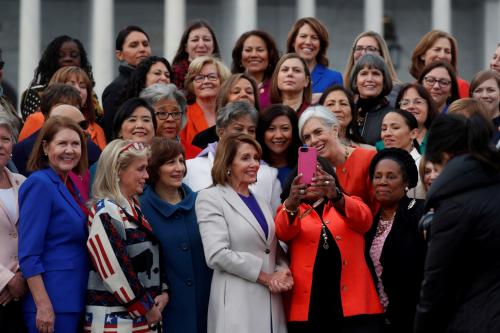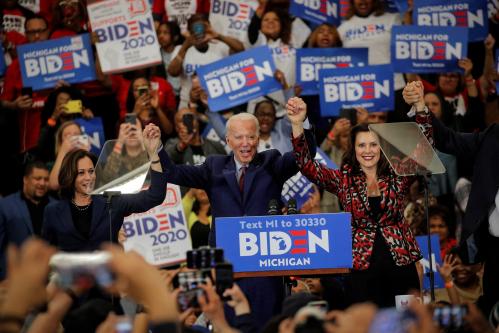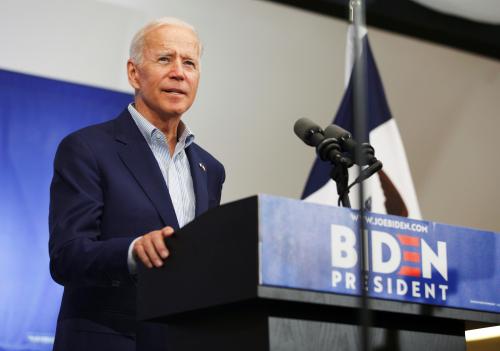Last month, former Vice President Joe Biden pledged to put an African American woman on the Supreme Court. Last night he topped that by pledging unequivocally to name a woman as his running mate, stunning not only the national press corps but his rival, Senator Bernie Sanders. Biden’s pledge is part of an emerging trend that is reshaping not only the Democratic Party but the contours of American politics.
A funny thing has happened while the country has been focused on Donald Trump’s presidential reality show. Beginning with the march on Washington the day after the 2017 Inauguration and picking up steam with each passing day, women’s opposition to Trump has steadily grown. Trump’s approval ratings (never robust) have consistently been lower among women than among men. An unprecedented number of women ran for Congress in the 2018 midterm elections—most of them Democrats—and the Democratic wins in 2018 that gave Nancy Pelosi’s party a majority in the House of Representatives were fueled by suburban women.
Morley Winograd and Mike Hais have argued that the massive movement of women into the Democratic Party is fueling a realignment with the potential to be as significant as the famous realignment of the 1930s. They write:
In 2016, Clinton led Trump by 13 points (54% to 41%), but in the 2018 midterm elections women opted for Democratic rather than Republican congressional candidates by 19 points (59% to 40%). More important for the long term, the Democratic margin over the Republicans in party identification grew from six points in 1994 (48% to 42%) to nearly twenty in 2017 (56% to 37%).
The importance of these trends cannot be overestimated. Unlike minority groups that tend to be concentrated in certain parts of the country, women are everywhere, and their turnout is consistently higher than men’s turnout. Even a small shift in the electorate’s majority demographic will have enormous consequences.
This is why the big news of the debate was Biden’s promise to put a woman on the ticket. He is accurately assessing a trend that often has been downplayed. Women are a dominant force in American politics and will continue to be in the future.
As for the rest of the debate, many observers predicted that Senator Sanders would use it to exact pledges from Biden on issues that divided them. Instead Sanders chose to go on the attack, in what may be a last-ditch effort to move voters from Biden. He drew some blood on Social Security where Biden’s record was more mixed than he chose to acknowledge. On the other hand, Biden’s attacks against Sanders on gun safety, immigration, and Mr. Sanders’s favorable comments about authoritarian leaders managed to offset Sanders’s criticisms.
To turn the tide that is running strongly against him, Senator Sanders needed a knockout last night. This didn’t happen. Although Sanders offered a strong summary of his well-known views, he did not manage to do anything that could fundamentally change the direction of the race. And that meant Mr. Biden came away with a win.
This was the 11th Democratic debate. It should be the last. By now, the arguments are familiar, as are the differences between the candidates. Given President Trump’s poor performance in the current crisis the Democratic Party now needs to do everything to underscore the contrast in character and experience between its likely nominee and the current occupant of the Oval Office. And Joe Biden is the most likely candidate to take on the mantle.








Commentary
The Democratic debate: Biden’s VP pledge shows that women will be key in 2020
March 15, 2020